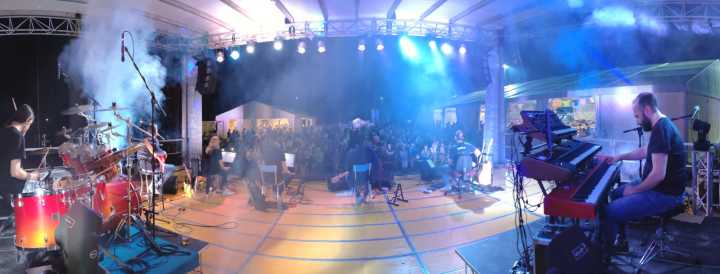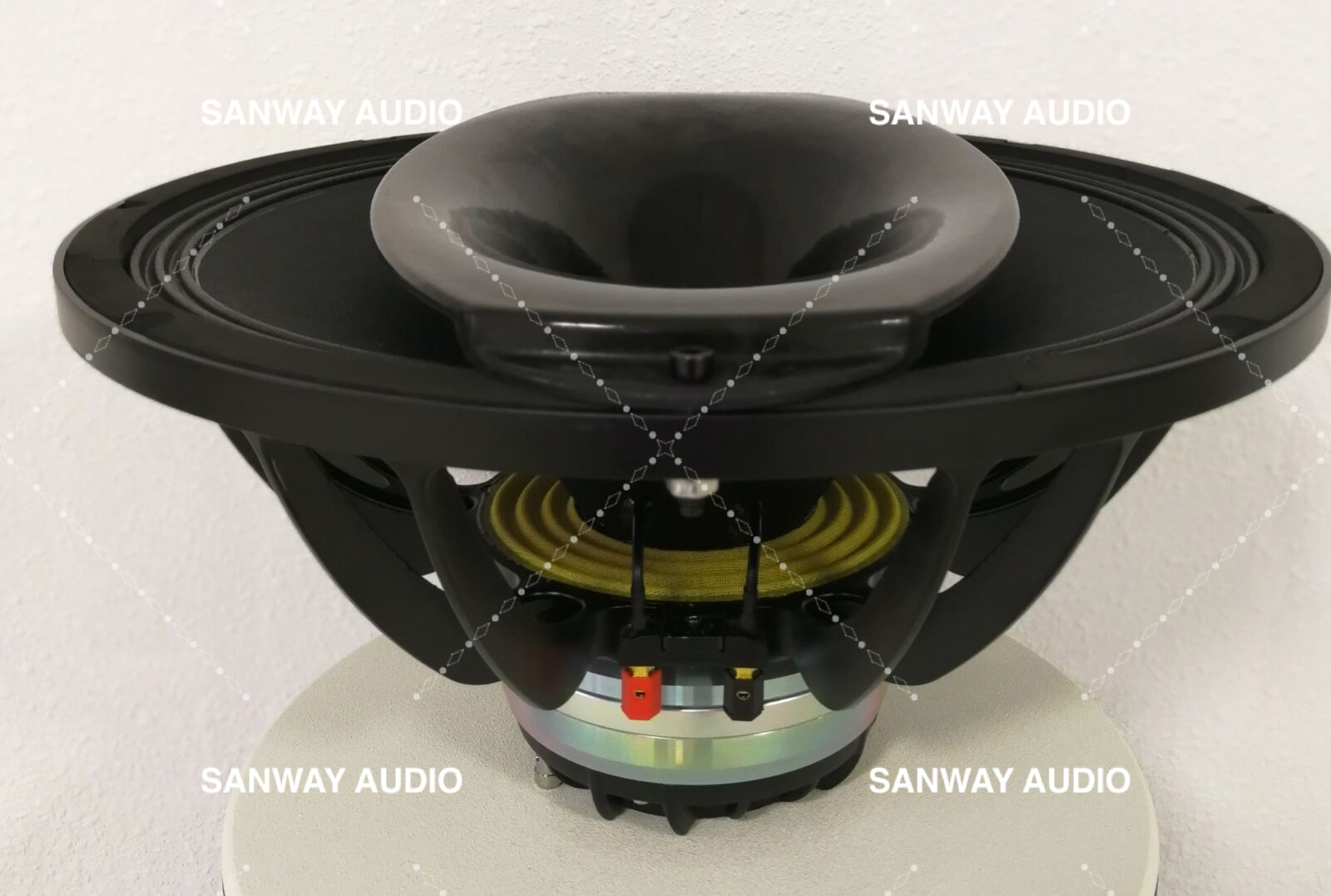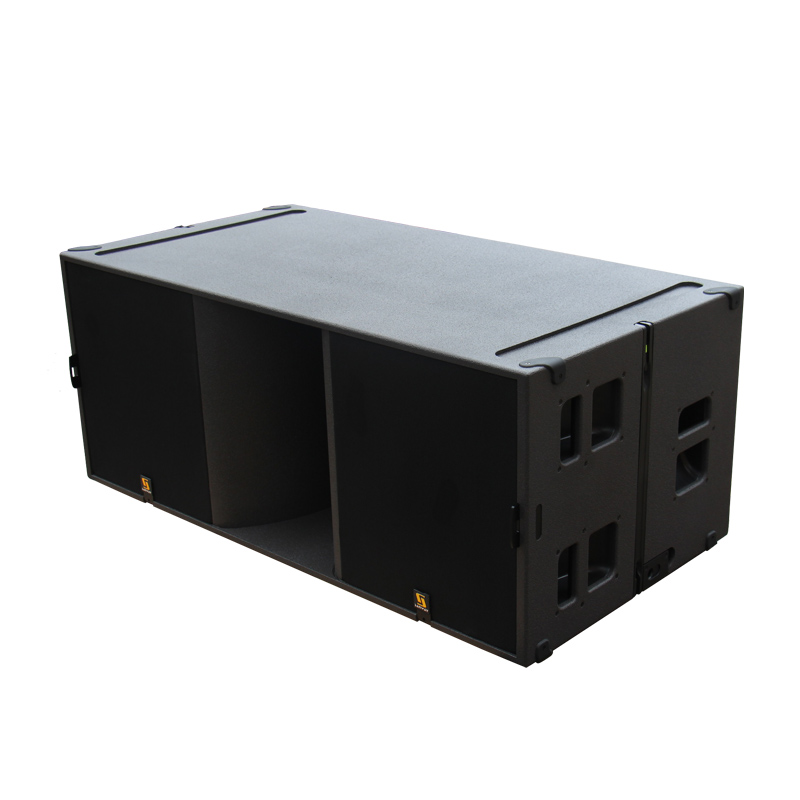
1. What is a coaxial speaker?
In general speakers, the tweeter and woofer are arranged flat on the panel of the speaker, so their sound centers cannot overlap into one point. In this way, the distance between the treble and the bass reaches the listener is different, and this difference will cause The phase deviation thus affects the correct restoration of the sound image. The coaxial speaker uses a coaxial unit, which is actually a combination of a tweeter and a woofer. The treble is cleverly placed in the center of the bass diaphragm, so it can ensure that the acoustic center of the high and low frequencies are the same point. , Thereby solving the problem of phase deviation.

2. What is the dumbbell arrangement?
That is, the tweeter is clamped tightly between two identical mid / woofers, which are a bit like two big dumbbells in the middle. The dumbbell arrangement can obtain a sound effect similar to that of a point source, which is good for stereo sound image positioning, so this design is more popular recently.
3. What is a two-wire crossover?
A conventional speaker has only one set of input binding posts. The full-band signal from the power amplifier is sent to the speaker with a set of speaker cables, and the high and low frequencies are separated by a crossover inside the speaker. Bi-wiring ( of Bi-Wiring ) with two sets of the speaker wire is connected to the amplifier and speakers, so high, the bass channel go their separate ways, not involved. Two-wire crossover needs to separate the input terminals of the treble channel and the bass channel of the crossover, so the speaker must provide two sets of binding posts. Of course, the speaker that can split the sound of two lines can also adopt the conventional single-line connection, as long as the two sets of terminals are connected together into one set with the metal short-circuit strips that come with the box.
Similar to two-wire crossover, if three sets of speaker cables are used to transmit treble, midrange and bass respectively, this connection method is called Tri-wiring . However, three-wire partials are not as common as two-wire partials.
4. Is the two-wire crossover necessarily better than the conventional connection?
The main reason for the two-wire split is that some speaker cables are suitable for transmitting low frequencies, and some are suitable for transmitting high frequencies. If the transmission is separated, the corresponding wires can be selected according to different needs to achieve the most ideal effect. However, this view is only a statement from one family, and some people think that the two-line splits do more harm than good.
5. Why is the bass of usually larger speakers better?
The lower limit of the low frequency of the speaker is closely related to two factors, one is the resonant frequency of the speaker unit, and the other is the volume of the cabinet. Without boxing, the low-frequency resonant frequency of the woofer is generally considered to be the lower limit of the effective frequency response of the unit. The larger the aperture of the unit, the lower the resonant frequency, so the use of a large speaker will help restore lower low frequencies. In addition, a larger diaphragm area can push more air under the premise of the same amplitude, and it is easy to obtain more low-frequency volume. After the horn unit is boxed, its resonance frequency will rise due to the stiffness of the air in the box. The larger the box volume, the smaller the effect of air on the unit, and the smaller the rise in resonance frequency, which is beneficial to obtain a lower Comprehensive low frequency response. Large speakers on the one hand facilitate the use of large-caliber woofers, on the other hand they have a larger cabinet volume, so low frequencies are usually better.


6. What are the criteria for evaluating the quality of speakers?
A truly excellent speaker should have both excellent objective performance indicators and good subjective listening evaluation. Excellent performance indicators include wide and flat frequency response, little distortion, fast transient response, high sound pressure output capability, high power carrying capacity, suitable impedance characteristics and reasonable sensitivity. What is a good subjective listening evaluation is an " art " , and everyone's standards are different. Theoretically speaking, since the speaker is a link of the sound reproduction system (and the final link that has the most obvious impact on the quality of the sound reproduction), it should be restored absolutely faithfully. Distorted or embellished and beautified, if it meets or approaches such a standard, it is a good speaker. This is the so-called " only true school " view. However, some people think that since the speakers are used to reproduce music, the sound quality is the standard for testing the quality of the speakers. This is the so-called " aestheticism " point of view. " Aestheticism " allows speakers to make reasonable modifications to the music signal, and does not care about whether the technical indicators are perfect, as long as the sound is " good " . The " Aestheticism " view is more suitable for those of us who use music as entertainment. However, there is no uniform standard for what is " good " , and it is easy to fall into misunderstandings in blind pursuit of goodness regardless of performance or personality. Therefore, objectively speaking, even a good speaker recognized by the " Aestheticism " should be built on the premise of ensuring the basic performance indicators.
Can a 7.4Ω speaker be connected to an 8Ω amplifier?
This is a very common problem and a typical problem with conceptual errors. The statement "8 ohm power amplifier " itself is not correct. The questioner may see some power amplifiers marked with words like "100W/8Ω" and think that the output impedance of this power amplifier is 8Ω . This is actually a misunderstanding, correct. The explanation is: With 8Ω load as the test condition, the output power of this amplifier is 100W .
Power amplifiers, whether transistor machines or tube machines, are constant voltage output power amplifiers, and their output impedance is very small. Transistor machines are generally below 0.1Ω , while tube machines are higher, but they are generally below 1Ω instead of 8Ω . Transistor amplifiers have a strong load capacity. In principle, speakers with any impedance can be connected. Of course, it should be noted that the impedance cannot be too low to make the amplifier overwhelmed or even overloaded. For example, connect a pair of 2Ω speakers (if any). Most power amplifiers of medium and low power will be overwhelming. For tube amplifiers, there is a problem of " optimal load " , that is, the performance of the circuit is the best when the load impedance is a certain value. The optimal load impedance is usually a few thousand ohms to several tens of thousand ohms, while the impedance of a speaker is only a few. Ohm, the difference is too large, so an output transformer is used for impedance transformation. The output transformer of the tube machine is generally equipped with different taps. No matter the impedance of the speaker, as long as the set of taps with the same (or close) value on the output transformer is selected, it can be " mapped " to the best load required by the power amplifier. In summary, when the power amplifier is matched with speakers, there is no need to worry about the impedance of the speakers at all. The transistor machine can be connected to speakers of any impedance, and the tube machine can adapt to speakers of various impedances by selecting the tap of the output transformer.

 English
English














